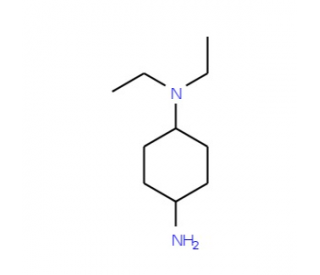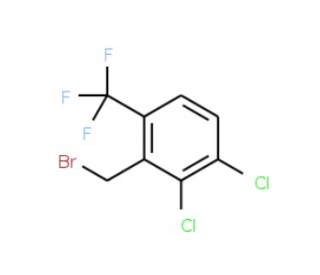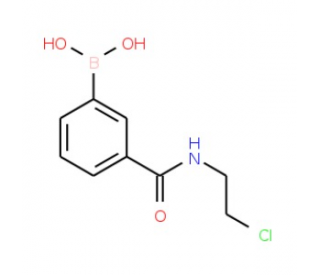詳細(xì)說明
Purity
>95%, by SDS-PAGE visualized with Silver Staining and quantitative densitometry by Coomassie? Blue Staining.
Endotoxin Level
<0.10 EU per 1 μg of the protein by the LAL method.
Activity
Measured by its binding ability in a functional ELISA. When Human Activated Protein C is immobilized at 3 μg/mL (100 μL/well), the concentration of Recombinant Mouse EPCR that produces 50% of the optimal binding response is approximately 0.1-0.6 μg/mL
Source
Mouse myeloma cell line, NS0-derived Leu18-Ser214, with a C-terminal 10-His tag
Accession #
N-terminal Sequence
AnalysisLeu18
Predicted Molecular Mass
24 kDa
SDS-PAGE
36-47 kDa, reducing conditions
9068-ER |
| |
Formulation Lyophilized from a 0.2 μm filtered solution in PBS. | ||
Reconstitution Reconstitute at 100 μg/mL in PBS. | ||
Shipping The product is shipped at ambient temperature. Upon receipt, store it immediately at the temperature recommended below. | ||
Stability & Storage: Use a manual defrost freezer and avoid repeated freeze-thaw cycles.
|
Background: EPCR
The endothelial protein C receptor (EPCR), also known as CD201, is an approximately 50 kDa transmembrane glycoprotein expressed on vascular endothelial cells and functions as a negative regulator of thrombosis (1). Mature mouse EPCR consists of a 197 amino acid extracellular domain (ECD), a 21 aa transmembrane segment, and a 7 aa cytoplasmic tail (2). Within the ECD, mouse EPCR shares 65% and 85% aa sequence identity with human and rat EPCR, respectively. EPCR inhibits thrombosis through its interactions with Protein C, activated Protein C (APC), and Coagulation Factors VII, and VIIa (3, 4). It enhances the activation of Protein C in response to complexes of Thrombin-Thrombomodulin (5). In humans, a soluble form of EPCR can be produced by alternative splicing or ADAM17/TACE mediated shedding (6-9), and this protein inhibits the anti-coagulant activity of APC (10, 11). EPCR can be degraded on the surface of endothelial cells by Neutrophil Elastase (12). Activation of EPCR also protects vascular endothelial cells from Thrombin-induced apoptosis (13). EPCR binds to CD11b/CD18 (Mac-1) on monocytes and mediates monocyte adhesion to the vascular endothelium (14). In addition, EPCR binds to the antigen receptor on gamma δ T cells (15), promotes hematopoietic stem cell retention in the bone marrow (9), and binds to surface proteins of some species of Plasmodium, contributing to pathogenicity in severe malaria (16).
References:
Montes, R. et al. (2012) Thromb. Haemost. 107:815.
Fukudome, K. and C.T. Esmon (1995) J. Biol. Chem. 270:5571.
Fukudome, K. and C.T. Esmon (1994) J. Biol. Chem. 269:26486.
Ghosh, S. et al. (2007) J. Biol. Chem. 282:11849.
Stearns-Kurosawa, D.J. et al. (1996) Proc. Natl. Acad. Sci. USA 93:10212.
Saposnik, B. et al. (2008) Blood 111:3442.
Qu, D. et al. (2007) J. Thromb. Haemost. 5:395.
Xu, J. et al. (2000) J. Biol. Chem. 275:6038.
Gur-Cohen, S. et al. (2015) Nat. Med. 21:1307.
Kurosawa, S. et al. (1997) J. Clin. Invest. 100:411.
Liaw, P.C. et al. (2000) J. Biol. Chem. 275:5447.
Villegas-Mendez, A. et al. (2007) J. Thromb. Haemost. 5:980.
Bae, J.-S. et al. (2007) Blood 110:3909.
Fink, K. et al. (2013) PLoS One 8:e53103.
Willcox, C.R. et al. (2012) Nat. Immunol. 13:872.
Turner, L. et al. (2013) Nature 498:502.
Long Name:
Endothelial Protein C Receptor
Entrez Gene IDs:
10544 (Human); 19124 (Mouse)
Alternate Names:
APC receptor; CCCA; CCD41; CCD41centrosome-associated protein; CD201 antigen; CD201; centrocyclin; Endothelial cell protein C receptor; endothelial protein C receptor; EPCR; EPCRMGC23024; PROCR; protein C receptor, endothelial










 粵公網(wǎng)安備44196802000105號(hào)
粵公網(wǎng)安備44196802000105號(hào)